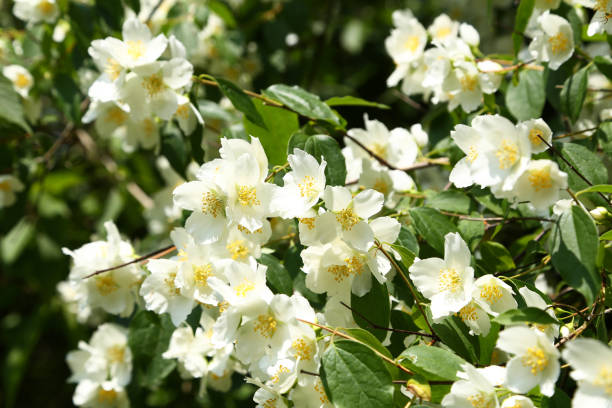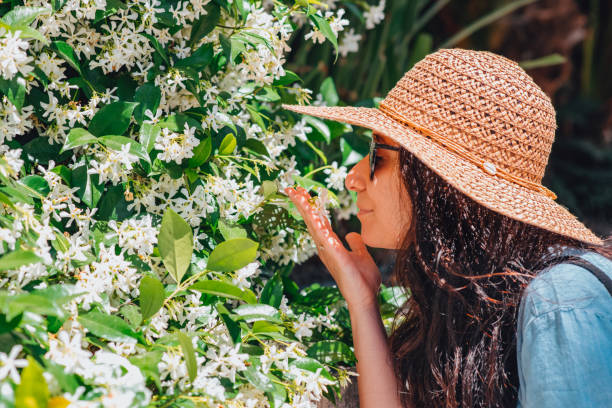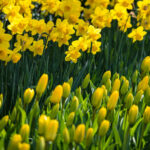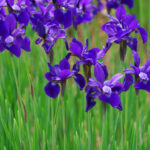Jasmine Flowers: A Thousand Words of Fragrance and Beauty
Jasmine flowers are renowned for their intoxicating fragrance, delicate beauty, and cultural significance. These star-shaped blossoms have captured human admiration for centuries, celebrated in gardens, art, and literature. Belonging to the genus Jasminum, these flowers are part of the Oleaceae family, which also includes olive trees. Jasmine is not only a popular ornamental plant but also a cherished ingredient in perfumes, teas, and essential oils. In this comprehensive exploration of jasmine, we will discuss its history, species, cultivation, uses, symbolic importance, and its role in garden design.


Historical and Cultural Significance
Jasmine has a long and rich history in many parts of the world, particularly in Asia, where it is native. Its name comes from the Persian word “Yasmin,” meaning “gift from God,” highlighting the high regard in which this flower has been held. In ancient Persia, jasmine was revered for its beauty and aroma, and it quickly spread to other parts of the world, including India, China, and eventually Europe.
In Indian culture, jasmine plays a vital role in religious rituals and personal adornment. The flowers are often used to make garlands, which are worn by women in their hair or offered in temples. In many parts of Southeast Asia, jasmine is considered a symbol of purity, love, and hospitality. Similarly, in China, jasmine flowers are used in traditional medicine and to scent tea, known as jasmine tea, which has been enjoyed for centuries for its calming and restorative properties.
In European culture, jasmine became popular during the Renaissance, when it was introduced to Mediterranean gardens. Its fragrance became synonymous with romance, and the flower was often associated with love, sensuality, and elegance.
Species of Jasmine
The Jasminum genus comprises about 200 species, with varieties that differ in size, bloom time, and fragrance. While most jasmine species are native to tropical and subtropical regions, some have adapted to cooler climates, making them accessible to gardeners worldwide. Here are some of the most well-known species of jasmine:
- Jasminum sambac (Arabian Jasmine)
Perhaps the most famous species, Jasminum sambac is revered for its intensely fragrant flowers, which are used in perfumes, teas, and religious offerings. This evergreen shrub can grow up to 3 meters in height and produces clusters of small, white, or pale pink flowers. Native to Southeast Asia, Jasminum sambac is the national flower of the Philippines and Indonesia. - Jasminum officinale (Common Jasmine or Poet’s Jasmine)
Known for its climbing habit, Jasminum officinale is a deciduous vine that can grow up to 6 meters tall. It is prized for its clusters of white, highly fragrant flowers, which bloom from late spring to early fall. Native to the Himalayas, this species has been cultivated in Europe since the 16th century and is a popular choice for covering trellises, arbors, and walls. - Jasminum polyanthum (Pink Jasmine)
This species is known for its pinkish-white, star-shaped flowers and its vigorous climbing growth. Jasminum polyanthum can grow up to 6 meters and is commonly grown in pots or trained along fences and pergolas. Its abundant bloom and strong fragrance make it a popular choice for indoor and outdoor cultivation. - Jasminum grandiflorum (Royal Jasmine)
Also called Spanish jasmine, Jasminum grandiflorum is known for its large, fragrant white flowers and its role in the production of jasmine oil, which is widely used in the perfume industry. This species is native to India and has been cultivated for centuries for its essential oil, often described as “liquid gold” due to its value in perfumery. - Jasminum nudiflorum (Winter Jasmine)
Unlike most jasmine species, Jasminum nudiflorum produces bright yellow flowers and is unique in its ability to bloom in winter, often as early as January. Native to China, this species is commonly grown as a ground cover or trained over walls, adding a splash of color to the winter garden. - Jasminum auriculatum (Juhi)
This species is native to India and is known for its small, white flowers and powerful fragrance. Jasminum auriculatum is often used in religious ceremonies and for making garlands. It is also one of the primary species used in the production of jasmine oil.
Growing and Cultivating Jasmine
Jasmine is a versatile plant, with species that thrive in various climates and growing conditions. However, most species prefer warm, sunny locations with well-drained soil. Here are some essential tips for growing and caring for Jasmine:
1. Location and Light
Jasmine plants thrive in full sun to partial shade. In colder climates, they do best when planted in a location that receives at least 6 hours of sunlight daily. In warmer, tropical areas, they can tolerate more shade, but their blooms may not be as prolific.
2. Soil Requirements
Jasmine prefers well-drained soil that is rich in organic matter. While it can tolerate a range of soil types, from sandy to loamy, ensuring good drainage is essential, as jasmine does not like to sit in waterlogged soil. Adding compost or well-rotted manure to the soil before planting can improve its fertility and texture.
3. Watering
Jasmine plants need regular watering, especially during their first year of growth. Once established, they are more drought-tolerant but will benefit from consistent moisture during the growing season. Mulching around the base of the plant can help retain moisture and keep the roots cool.
4. Pruning
Regular pruning helps keep jasmine plants healthy and encourages more prolific blooming. For climbing varieties, pruning can help control their growth and shape, while bushier types benefit from being trimmed back after flowering to maintain their shape and size.
5. Fertilizing
Jasmine plants benefit from an annual application of balanced, slow-release fertilizer in early spring. This helps support vigorous growth and an abundant bloom. Organic options, such as compost or liquid seaweed, can also provide the necessary nutrients without overloading the soil with chemicals.
6. Pests and Diseases
Jasmine plants are relatively pest-resistant, but they can occasionally suffer from issues such as aphids, spider mites, and whiteflies. Regularly inspecting the plant and treating infestations with insecticidal soap or neem oil can help keep these pests in check. Jasmine can also be susceptible to fungal diseases, particularly in humid climates, so good air circulation and proper watering are essential.
Uses of Jasmine
Jasmine’s uses go far beyond its beauty in the garden. It has a long history of use in various industries, from perfumery to herbal medicine. Here are some of its key applications:
1. Perfumery
Jasmine is one of the most sought-after ingredients in the fragrance industry. Its rich, sweet scent forms the heart of many high-end perfumes, including famous blends like Chanel No. 5. Jasmine oil is typically extracted through a process known as enfleurage, where the flowers are placed on layers of fat to absorb their fragrance.
2. Tea and Culinary Uses
Jasmine tea, made by scenting green or white tea leaves with jasmine blossoms, is a popular beverage in China and other parts of Asia. The subtle floral aroma of jasmine adds a delicate sweetness to the tea, making it a favorite choice for relaxing and unwinding.
3. Medicinal Uses
In traditional medicine, jasmine has been used for its calming and soothing properties. It is believed to help relieve stress, anxiety, and insomnia. The flowers, leaves, and roots are also used in various remedies for ailments ranging from headaches to skin irritations.
Symbolism and Cultural Importance
Jasmine holds significant symbolic meaning in many cultures. In India, it is associated with love, purity, and spirituality. Jasmine garlands are often worn by brides, and the flowers are used in religious rituals and offerings to deities. In Thailand, jasmine is the symbol of motherhood and is often given as a gift to mothers on special occasions.
In the Middle East and the Mediterranean, jasmine represents beauty and sensuality. Its alluring fragrance has inspired poets, artists, and lovers throughout history. In Western culture, jasmine is often linked to romantic love and is used as a symbol of elegance and grace.
Jasmine in Garden Design
Jasmine is a versatile plant that can be used in various garden settings. Climbing varieties are ideal for training over trellises, walls, and pergolas, where their fragrant blooms can cascade down, filling the air with their scent. Bushier species can be grown as hedges or standalone shrubs, providing structure and fragrance to borders and beds.
Jasmine also pairs well with other fragrant plants such as roses, gardenias, and lavender, creating a sensory-rich garden space. In containers, jasmine can be grown on patios, balconies, or indoors, allowing gardeners to enjoy its fragrance even in small spaces.
Conclusion
Jasmine flowers are more than just beautiful blooms; they are a symbol of love, purity, and sensuality. With their delicate beauty, heady fragrance, and diverse species, jasmine plants are a favorite among gardeners, perfumers, and tea drinkers alike. Whether adorning a garden trellis, scenting a cup of tea, or symbolizing love in a wedding garland, jasmine flowers continue to enchant and inspire with their timeless elegance.







